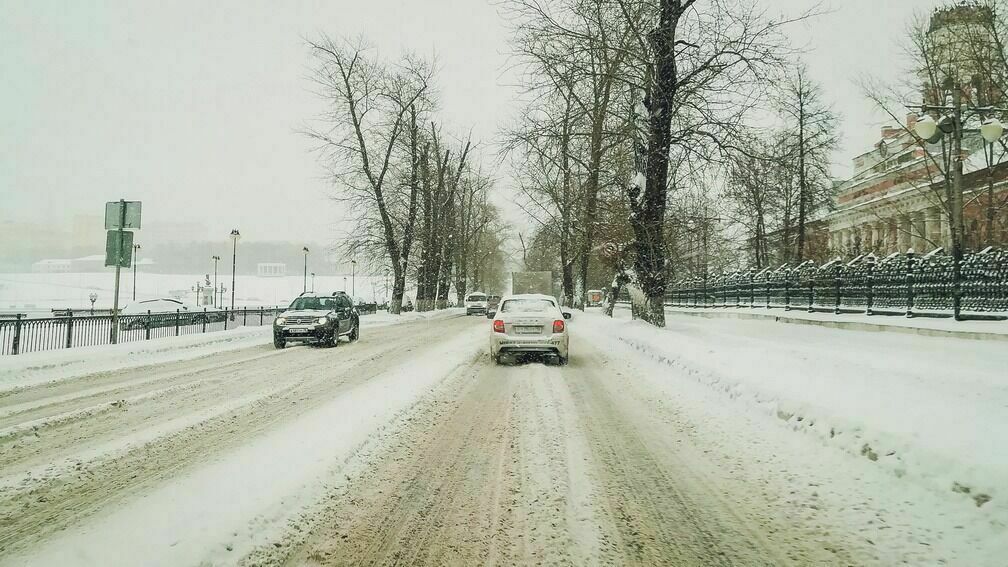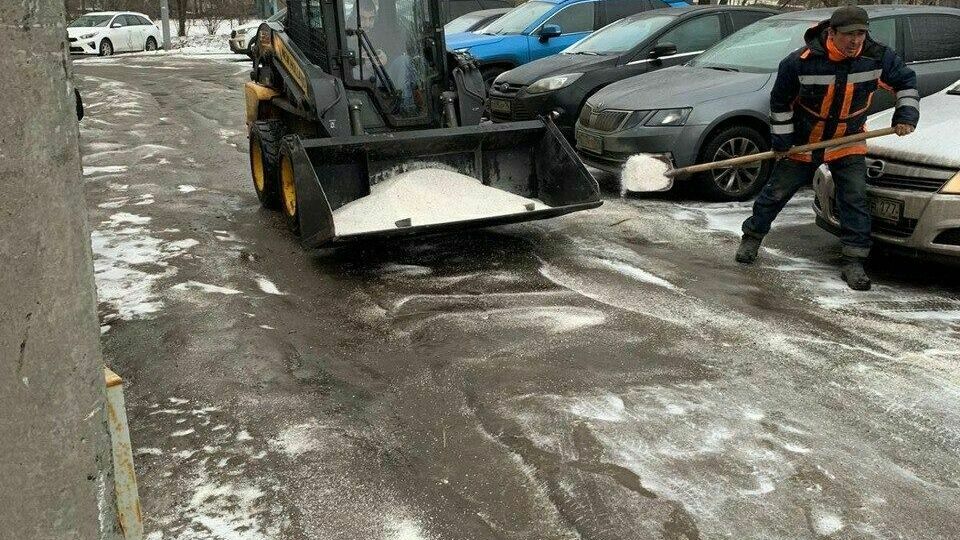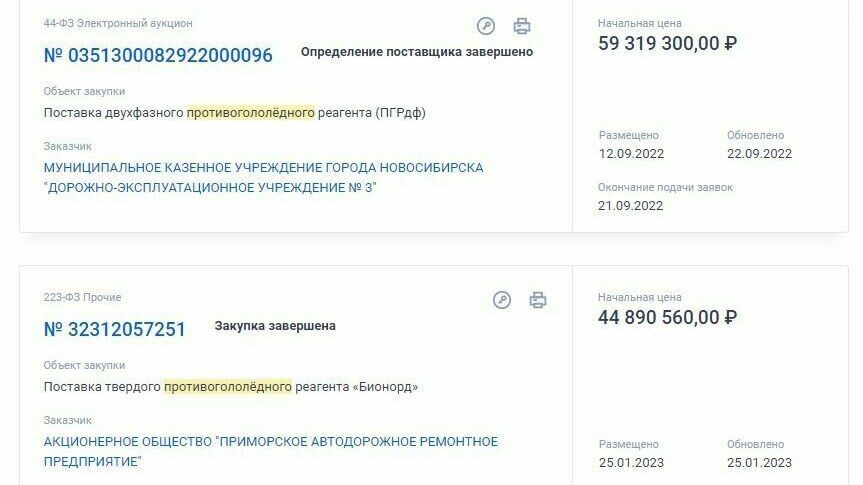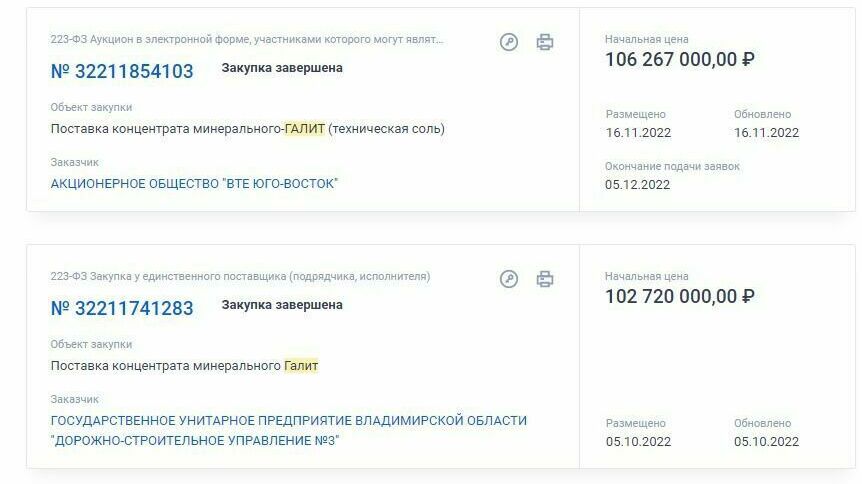Posted 14 февраля 2023, 06:47
Published 14 февраля 2023, 06:47
Modified 14 февраля 2023, 06:52
Updated 14 февраля 2023, 06:52

The problem of reagents on the roads: someone suffers, but someone earns
Alexander Dybin
An activist from Moscow, Ivan Yezhikov, has been trying for two years to catch the hand of utility workers who salt the sidewalks.
In February 2022, he filmed how bags of salt were being unloaded near the housing office.
"I caught the "Zhilishchnik of the Khoroshevo-Mnevniki district" on the fact that instead of combined deicing reagents, pure salt is imported into the yards of our district. Tons! - the activist wrote in his blog, - I videotaped first the fact that the wipers were overloading salt from large bags into small ones for dragging to storage sites, and then the process of disposing of salt, which they did not have time to take out by throwing it into the nearest snowdrift. Everything was captured on video – faces, car numbers, employees' uniforms."But the authorities then replied that the salt was scattered by "a third-party organization without approval".
The following winter, history repeated itself.
"After the last scandal, I was sure there would be no salt in the area this year, they would buy normal PGR," the activist says, "but no. The thirst for profit – and a ton of salt is 2 or even 3 times cheaper than a ton of reagent – forced me to take a risk again. The purchased reagent was stupidly dumped on the Karamyshevskaya embankment 100 meters from the Housing Owner's office. And I found him there, of course".


In St. Petersburg, back in 2016, the authorities announced that they would not use all the hated reagents. But the promise was quickly forgotten. Especially against the background of the fact that snow removal, or rather its absence, is a political issue. Former Governor Georgy Poltavchenko left his post to the roar of falling icicles and the crunch of snowdrifts under the feet of citizens. The current governor Alexander Beglov also got for the snow, to whom Sergey Shnurov dedicated several tooth-crushing songs in the midst of the snow-garbage crisis. Since then, the city authorities are not afraid to overdo it. In 2022, 10 thousand tons of salt were spent more than a year earlier. And there were purchases of reagents for 55 thousand tons. In the scandalous 2021, such chemicals were not bought at all.
Interestingly, the winter of 2022-2023 has become much calmer in terms of icy heat. But this time the weather rather took pity on the officials, there were no prolonged snowfalls with record precipitation this winter. But there is still discontent associated with the use of salt and reagents. So, activists of the Central District sent an open letter to the authorities, in which they told about the abuse of reagents.
"As they poured himosa, so we will pour it! This is how we should understand the response on reagents that we received from the office of the vice-governor, - say activists from the community "Central District for a Comfortable Environment", - In early December, we drafted and invited everyone to sign an open letter, where we demanded to radically and competently change the approach to cleaning our streets. Scrape the roadway as you like, but pedestrian areas must be left with a snow roll without reagents. When it is slippery - treat it with sand or granite chips, but not with salt and reagents! That's what we demand and what we want to implement in the first place!"
In Novosibirsk, motorists are actively discussing the topic of salt and its impact on car bodies on social networks. Observations of citizens say that cars began to rust faster than usual, and brands and models that had not suffered from these sores before began to enter services with rotten thresholds.
For several years, an irreconcilable struggle with reagents has been waged in Krasnoyarsk. The topic is so acute that even the governor, who formally should not have anything to do with the maintenance of city roads, publicly made a request to abandon the reagent of the brand "Bionord". Aexander Uss published a video with an appeal to the road services. In the same Krasnoyarsk, Rospotrebnadzor banned the use of another reagent - "HCNM" as not meeting the requirements. The road workers tried to overturn the decision in court, but lost.
Salt has become a problem for a small Bratsk. Where deputies of the local Duma appealed to Rosavtodor with a request to stop sprinkling roads in the city with reagents. Earlier, a local transport company stated that trolleybuses fail due to chemistry - dust settles on the units, which is a conductor of electricity, from this the wiring says.
The question is relevant for the whole country, from the capital to the Far East.
What's wrong with reagents
Residents of cities have accumulated a whole bunch of complaints about anti-icing materials, and, regardless of what exactly is sprinkled with. Gravel can turn into shrapnel, which flies from under the wheels, leaving cracks on the paintwork and cracks on the windows. Salt in its pure form triggers corrosion processes, corrodes shoes and injures the paws of dogs. Reagents, where other chemicals are used in addition to ordinary table salt, as well as abrasive materials, such as granite chips, after sprinkling the streets turn the road into a dirty mess. Sometimes, if the material is not selected according to the weather, instead of water, snow turns into even more slippery slime. And in the spring, when the snow melts, salt remains on the lawns and kills trees or turns into road dust, which is not always cleaned.
In 2017, a scientist from Yekaterinburg, the author of the popular blog "Chemistry is simple" Alexander Ivanov tested a sample of a reagent that appears in dissatisfied posts more often than others. From the calculations, the chemist deduced that 2.19 grams of insoluble components, or just dirt, come out of 145 grams of the reagent. That year, 7,727.5 tons of reagent were consumed in the city, and in terms of this volume, 116.71 tons of dust were poured onto the streets of Yekaterinburg (this is in addition to salt), these are 5-6 KAMAZ trucks loaded to the eyeballs. A test of the reagent on a mass spectrograph found microdoses of uranium and thorium in the preparation.
If they buy salt, it means that someone needs it
The supply of salt and reagents is a huge market. With the help of the public procurement portal, you can see only part of its volume. So, according to the system, since August 1, more than 50 contracts for the supply of reagents worth more than 250 million rubles have been concluded. Even more purchases are related to technical integration. There are more than 500 such contracts in the system, and the amount has exceeded a billion. At the same time, public procurement shows only a part of the market, road and utility organizations are usually private, which means that their purchases are not visible. As far as this is a profitable business, wine according to the producers' reports. Thus, according to the SPARK database, PSK GEODOR, which produces the reagent of the same name, received revenue of 1.4 billion in 2021. Only one of the legal entities associated with the Ural Plant of Deicing Materials, which produces Bionrod, reported revenue of 1.7 billion rubles in 2021. And in 2022, the company only has public procurement in the amount of 1.2 billion.
What to do?
Journalists have repeatedly asked reagent manufacturers why there are so many complaints about their product. The answer is one: they are not used correctly. It is noted that utilities and road workers often use substances not according to technology. For example, for severe cold or warm weather, different substances and different volumes are needed. In addition, road workers have been repeatedly convicted of laziness when, instead of snow removal, it is sprinkled with reagents. According to the norms, snow should be removed, only then pour chemicals so that ice does not appear. And the sludge itself from the melted snow also needs to be cleaned. But it all boils down to the fact that the city services are hoping for the magical power of white powder.What remains for drivers and pedestrians?
Where is the balance between safety and cleanliness?
Alexander Kholodov, Deputy Chairman of the Commission on Security and Interaction with the Public Chamber of the Russian Federation, believes that safety is still more important in this dispute.
"Naturally, the body is corroded by salt," he says, "for example, in St. Petersburg cars rot much faster not only because of salt, but also because of the climate. There is an example of Filyandii, where roads are sprinkled with granite chips, then collected, cleaned, and used again a year later. But apparently, this is not our experience. We cannot afford to carry out all these manipulations in a huge city. Yes, and when the choice is between road safety and the fact that the car will rot faster, but, probably, the choice aside should be safety."
Ivan Yezhikov, an activist from the capital, notes that first you need to strictly comply with GOST standards and manufacturers' instructions.
"If you use reagents according to the standards, that is, observing the dosage and scattering the reagent only on ice and only when it is prescribed by technology, then nothing terrible will happen," he says, "but with us everything is different - salt is heated snow, instead of cleaning, snowdrifts, instead of removal, and so on. It turns out an overdose, and these are burnt paws of dogs and people's shoes, dead lawns and diseased trees, poisonous dust with salt in the spring. Alternatives are mixtures with a low salt content and a high content of friction components - sand, marble or gravel chips. Well, the main alternative is to clean the snow in time, then ice will form less often and in less quantity".





